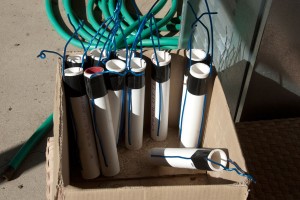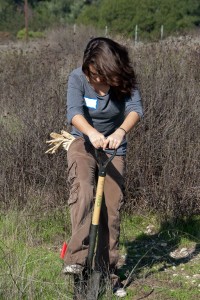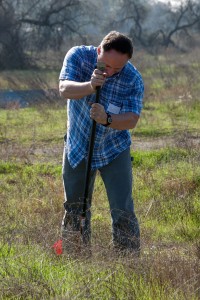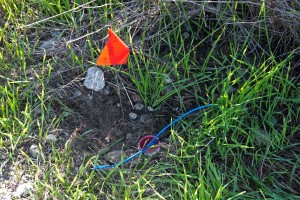BFS Director Marty Meyer is initiating an arthropod monitoring program at the BFS, and this past Saturday, volunteers helped get the program underway by installing permanent sleeves for pitfall traps in the non-native grasslands in the East Field and in the area of recovering coastal sage scrub. The data collected on the abundance and diversity of ground-dwelling arthropods (such as beetles, ants, pill bugs, and scorpions) in different habitats at the BFS as well as in areas outside the BFS will help us understand which arthropods are endemic to coastal sage scrub and inform conservation and restoration.
The ground-dwelling arthropods will be collected in pitfall traps made out of large test tubes. To facilitate repeated collecting the same locations, permanent sleeves of PVC pipe are placed in the ground so their tops are level with the soil surface. When not in use, the sleeves are capped to prevent anything from falling in. When a trap is deployed, the cap is removed, a test tube is fitted snugly into the sleeve, and sleeve and test tube are covered with a cap that excludes small rodents and reptiles but allows the arthropods to enter the trap. You can read more about the traps here.
The first step in deploying the traps is obviously to install the sleeves. In each habitat, 8 sites with three sampling locations in each had already been selected. One team of volunteers installed pitfall trap sleeves in the grasslands…
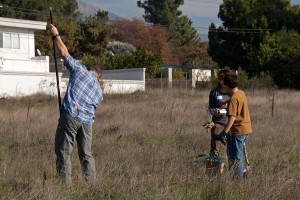
Prof. Paul Stapp (Cal State Fullerton), Elise Boyd (Pomona ’16), and Ben Stapp at work in the grasslands. ©Nancy Hamlett.
…while a second team installed the sleeves in recovering coastal sage scrub.
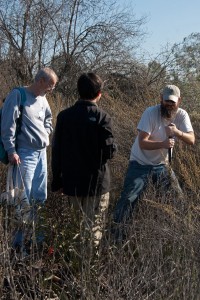
Prof. Dick Haskell (HMC), Michael Lertvilai (HMC ’16), and BFS Director Marty Meyer working in the recovering coastal sage scrub. ©Nancy Hamlett.
Making holes in the ground at the BFS can be a bit tricky. Because the BFS lies on an alluvial fan, the soil is full of pebbles and rocks wash down from the San Gabriel Mountains. Several tools were used to make holes for the sleeves, including narrow drain spades…
…and heavy San Angelo bars. Even so, we occasionally had to relocate the holes to avoid large boulders.
At the end of the workday, all 48 sleeves were installed in place, just waiting for the trapping to begin.
As always, there were interesting things to see while we were working. The grasslands right now have a lot of grasshoppers, like this one:

Ben Stapp holds a female Devastating Grasshopper (Melanoplus devastator) found in the East Field. ©Nancy Hamlett.
We also found a soccer ball covered with teethmarks. Soccer-playing coyotes? Now that’s a sight I’d like to see!
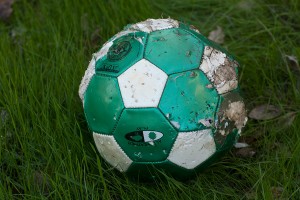
Do coyotes play soccer? A soccer ball covered with teeth marks found in the East Field. ©Nancy Hamlett.
This was the last volunteer workday before the winter holiday. Thanks to everyone who’s participated! Workdays will resume on January 19. Please check the volunteer schedule for updates.
